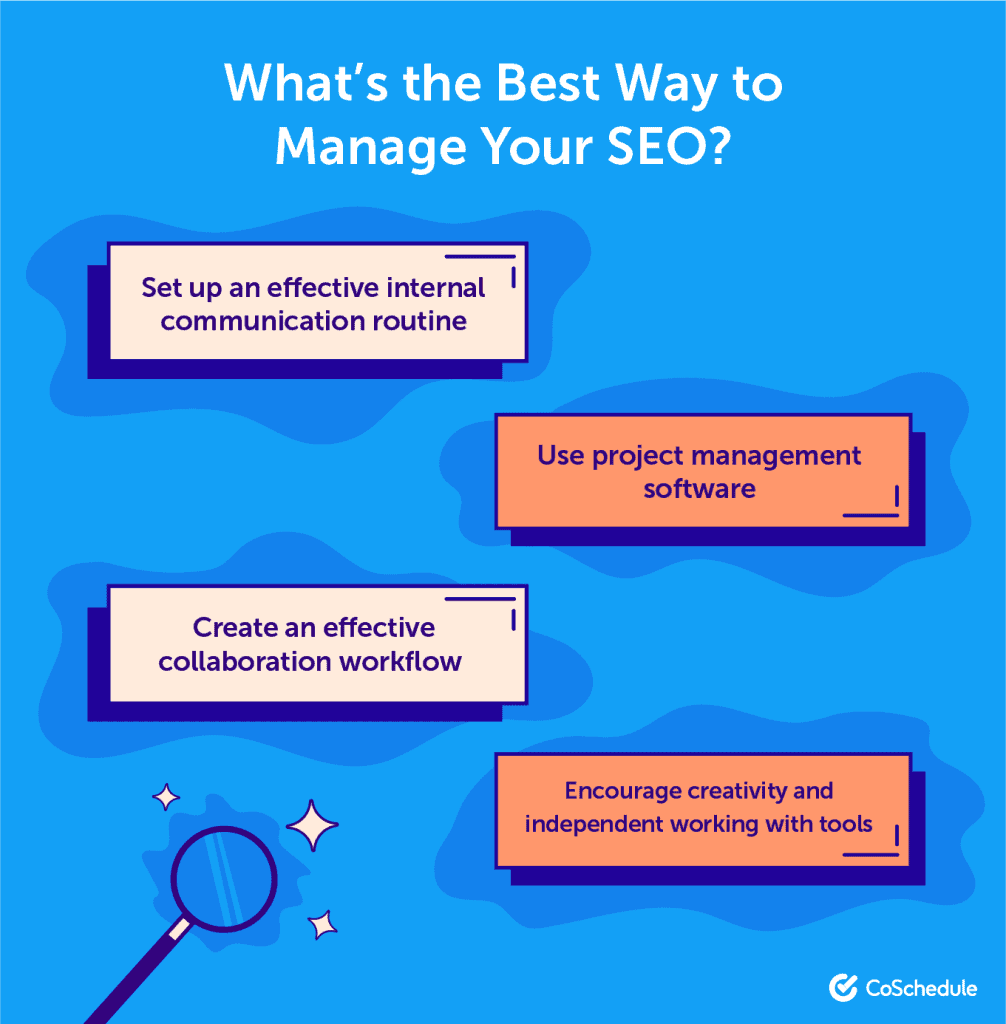When it comes to working with SEO clients, effective communication and collaboration are key throughout the entire project.
Ensuring a smooth and productive partnership requires regular check-ins, clear expectations, and a willingness to listen and respond to client needs.
By maintaining open lines of communication, providing updates, and actively involving clients in the decision-making process, you can foster a strong client relationship and achieve successful SEO outcomes.
Setting Clear Objectives
Defining project goals
When starting a project, it is essential to define clear and specific objectives. These goals will serve as a roadmap for the project and guide the work that needs to be done. Take the time to discuss with your client and understand their desired outcomes. Ask questions like, “What do you hope to achieve with this project?” or “What are your priorities and key focus areas?” By understanding their goals, you can align your strategies and tactics accordingly.
Identifying key performance indicators
Key performance indicators (KPIs) are measurable metrics that help track progress towards achieving project goals. It is crucial to work with the client to identify these KPIs and establish realistic targets. These indicators could be metrics like website traffic, conversion rates, or keyword rankings. By defining these KPIs, you can regularly evaluate the success of your efforts and make data-driven decisions to optimize your strategies.
Establishing a timeline
To ensure effective project management, it is important to establish a clear timeline. This timeline should outline the major milestones and deliverables of the project, as well as set deadlines for each task. By breaking down the project into smaller, manageable tasks and assigning appropriate timeframes, you can ensure that progress stays on track. Communicate this timeline to the client, so they have visibility into the project’s progress and can provide feedback or make adjustments if needed.
Initial Client Meeting
Introducing team members
In the initial client meeting, it is vital to introduce the key members of your team. This helps establish a personal connection and builds trust and rapport with the client. Make sure to provide a brief background of each team member and emphasize their expertise and experience relevant to the project. By introducing the team members, you showcase your commitment to collaboration and reassure the client that they have a dedicated and qualified team working on their project.
Explaining the project scope and process
During the initial client meeting, it is crucial to explain the project scope and process in detail. This includes explaining what services you will be providing, what tasks are included, and what results the client can expect. Provide a comprehensive overview of the SEO strategies, techniques, and tactics that will be implemented. Make sure to discuss any limitations or constraints upfront to manage the client’s expectations effectively.
Establishing communication channels
Establishing clear communication channels from the outset is essential for effective collaboration throughout the project. During the initial meeting, discuss and agree upon the preferred communication channels with the client. This could include email, phone calls, video conferences, or project management tools. By aligning on communication preferences, it becomes easier to stay connected, address concerns, and provide timely updates.

Regular Progress Reports
Providing status updates on project milestones
Regular progress reports are a vital component of effective communication with SEO clients. It is essential to provide status updates on project milestones and deliverables. This could include detailing completed tasks, upcoming milestones, and any challenges or roadblocks encountered. By sharing this information, you keep the client informed, manage expectations, and maintain transparency throughout the project.
Sharing analytics and data-driven insights
In addition to progress updates, it is important to share comprehensive analytics and data-driven insights regularly. This allows the client to track the impact of your SEO efforts, understand the trends, and make informed decisions. Use tools like Google Analytics to provide detailed reports on website traffic, keyword rankings, and conversion rates. It is also valuable to highlight any notable observations or trends and offer recommendations for improvements based on the data.
Addressing any questions or concerns
Client feedback and concerns should be addressed promptly and effectively. Throughout the project, encourage the client to ask questions and voice any concerns they may have. Actively listen to their input and provide clarifications or explanations as needed. By addressing questions and concerns in a timely manner, you demonstrate your commitment to client satisfaction and show that their input is valued.
Scheduled Check-in Meetings
Scheduling regular meetings to discuss progress
Scheduled check-in meetings provide an opportunity to have dedicated discussions about project progress. Determine a frequency that works for both parties and schedule recurring meetings. Use these meetings to provide updates, discuss any challenges or roadblocks, and align on the next steps. It is important to respect the client’s time and come prepared with an agenda to ensure that the meetings are productive and focused.
Reviewing project deliverables and next steps
During check-in meetings, review the completed project deliverables and discuss the next steps. This allows the client to provide feedback and make any necessary adjustments. By reviewing the deliverables together, you can ensure alignment between your work and the client’s expectations. Additionally, discussing the next steps provides clarity and keeps the project moving forward smoothly.
Seeking client feedback and input
Check-in meetings are also an ideal opportunity to seek client feedback and input. Encourage the client to share their thoughts on the project’s progress, strategies, and tactics. Actively listen to their feedback and use it to refine your approach and optimize your efforts. By involving the client in the decision-making process, you show that their opinions matter and contribute to building a successful project.

Collaborative Tools and Platforms
Utilizing project management tools for task assignment
Project management tools play a crucial role in facilitating communication and collaboration with SEO clients. Use these tools to assign tasks to team members, track progress, and set deadlines. This ensures that everyone is on the same page and knows what needs to be done. Project management tools like Trello or Asana can provide visibility into the project’s progress and allow clients to monitor the status of their tasks.
Sharing documents and files via collaborative platforms
Collaborative platforms such as Google Drive or Dropbox are invaluable for sharing documents and files with SEO clients. These platforms enable real-time collaboration, allowing team members and clients to work on documents simultaneously. By using collaborative platforms, you ensure that everyone has access to the latest versions of documents and can provide input or make edits as needed.
Using communication tools for real-time discussions
Real-time communication is crucial for addressing urgent matters and facilitating immediate discussions. Utilize communication tools like Slack or Microsoft Teams to have real-time conversations with clients. These tools enable instant messaging, file sharing, and even video conferences. By leveraging real-time communication tools, you can resolve issues and provide timely responses to client queries effectively.
Active Listening and Understanding
Actively listening to client needs and preferences
Active listening is a fundamental skill when collaborating with SEO clients. During discussions and meetings, make a conscious effort to listen attentively to the client’s needs and preferences. This demonstrates that you value their input and are committed to meeting their expectations. Take note of important details to ensure that you are fully aware of their requirements and can provide the best possible solutions.
Taking notes and clarifying any uncertainties
To ensure a clear understanding of the client’s requirements, take detailed notes during meetings and discussions. This helps to capture essential information and prevents any misunderstandings or misinterpretations. If there are any uncertainties or ambiguities, don’t hesitate to seek clarification from the client. By taking notes and clarifying uncertainties, you can deliver accurate and tailored results that align with the client’s vision.
Demonstrating empathy and empathy towards client concerns
Empathy is a crucial element in building strong client relationships. When clients express concerns or frustrations, it is important to acknowledge their emotions and demonstrate understanding. Show empathy by putting yourself in their shoes and considering their perspective. Offer reassurance and actively work towards addressing their concerns. By practicing empathy, you can foster a positive and collaborative working relationship.

Building Trust and Rapport
Being transparent about progress and challenges
Transparency is the foundation of trust in any client relationship. Be open and honest about the progress and challenges encountered during the project. If there are delays or roadblocks, communicate them promptly to the client and provide explanations or alternative solutions. By being transparent about the project’s progress and challenges, you demonstrate integrity and build trust with the client.
Maintaining open lines of communication
Consistent and open communication is essential for building rapport with SEO clients. Respond to emails or messages promptly and keep the client updated on progress regularly. Make yourself available for discussions and ensure that the client feels heard and valued. By maintaining open lines of communication, you establish a collaborative atmosphere and foster a sense of partnership with the client.
Demonstrating expertise and providing valuable insights
To build trust and rapport, it is important to demonstrate your expertise and provide valuable insights to the client. Share industry trends, best practices, and recommendations based on your experience. Provide a rationale for your strategies and tactics to help clients understand the value of your work. By showcasing your expertise and offering valuable insights, you establish yourself as a trusted advisor and build credibility with the client.
Providing Timely Responses
Responding promptly to client queries and messages
Timely responses are crucial to maintain effective communication with SEO clients. Respond to client queries and messages as promptly as possible, ideally within 24 hours. Even if you need more time to gather information or provide a detailed response, acknowledge the client’s message and provide an estimated timeframe for a complete reply. By responding promptly, you demonstrate professionalism and show that the client’s concerns are a top priority.
Setting clear expectations for response times
To avoid potential miscommunications, it is important to set clear expectations for response times. Communicate to the client how long they can expect to wait for a response from you or your team. This ensures that the client understands the turnaround time and can plan their own activities accordingly. By setting clear expectations, you manage client expectations and create a more efficient communication process.
Anticipating and addressing potential communication gaps
Proactively anticipating potential communication gaps is essential to ensure seamless collaboration with SEO clients. Pay attention to any recurring issues or gaps in understanding that arise during the project. Take steps to address these gaps, such as providing additional explanations, clarifications, or examples. By anticipating and addressing potential communication gaps, you can prevent misunderstandings and maintain strong communication throughout the project.
)
Adapting to Client Communication Preferences
Understanding client’s preferred communication channels
Every client may have different preferences when it comes to communication channels. Take the time to understand and adapt to the client’s preferred communication channels. Some clients may prefer email, while others may prefer phone or video conferences. By adapting to the client’s communication preferences, you create a more comfortable and efficient communication process.
Respecting client’s time and availability
Respecting the client’s time and availability is crucial for effective communication. Avoid contacting clients outside of agreed-upon working hours and be mindful of their availability for meetings or discussions. If urgent matters arise, seek their permission before contacting them outside of the established schedule. By respecting their time and availability, you demonstrate professionalism and consideration.
Adjusting communication style to meet client’s needs
Communication styles can vary from client to client. It is important to adapt your communication style to meet the client’s needs. Some clients may prefer a formal and detailed approach, while others may prefer a more casual and concise style. Pay attention to the client’s communication preferences and adjust your tone, language, and level of detail accordingly. By adapting your communication style, you make it easier for the client to understand and engage with the project.
Wrapping Up the Project
Conducting a final project review and evaluation
When nearing the completion of the project, it is important to conduct a final review and evaluation. This involves assessing the project’s success in achieving the defined goals and objectives. Review the KPIs and metrics established at the beginning and evaluate their performance. Take the time to reflect on the project’s strengths, weaknesses, and lessons learned. This review provides valuable insights for future projects and helps identify areas for improvement.
Obtaining client feedback and testimonials
Client feedback is a valuable resource for improvement and building credibility. Request feedback from the client about their experience working with you and your team. This feedback can provide valuable insights into what went well, where there may have been pain points, and how the overall service was perceived. Additionally, consider asking the client for a testimonial that can be used for future marketing and to showcase your expertise.
Discussing potential future collaborations
As the project comes to a close, initiate a conversation with the client about potential future collaborations. Express your interest in a continued partnership and discuss any upcoming projects or opportunities. By demonstrating your commitment to ongoing collaboration, you show that you value the relationship and are invested in the client’s success. Discussing potential future collaborations keeps the door open for continued business and a long-lasting partnership.









